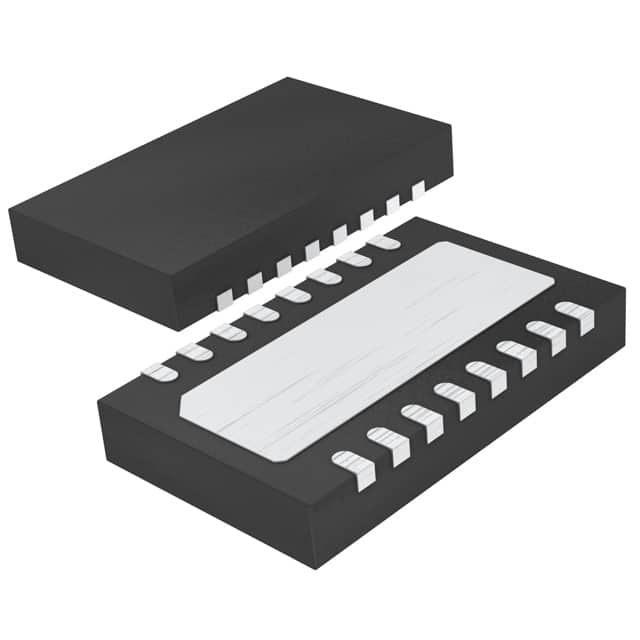LTC2914IDHC-2#PBF
Product Overview
Category
The LTC2914IDHC-2#PBF belongs to the category of integrated circuits (ICs).
Use
This product is commonly used in electronic devices for various applications, including power management and control systems.
Characteristics
The LTC2914IDHC-2#PBF is known for its high performance and reliability. It offers precise voltage monitoring and control capabilities, making it suitable for critical applications that require accurate power management.
Package
The LTC2914IDHC-2#PBF comes in a compact and durable package, ensuring protection against external factors such as moisture and mechanical stress. The package type is DFN (Dual Flat No-Lead), which allows for easy integration into circuit boards.
Essence
The essence of the LTC2914IDHC-2#PBF lies in its ability to monitor and regulate voltage levels effectively, providing stability and efficiency to electronic systems.
Packaging/Quantity
This product is typically packaged in reels or tubes, depending on the manufacturer's specifications. The quantity per package may vary, but it is commonly available in quantities suitable for both small-scale and large-scale production.
Specifications
The LTC2914IDHC-2#PBF has the following specifications:
- Input Voltage Range: 2.7V to 5.5V
- Operating Temperature Range: -40°C to 85°C
- Output Voltage Range: 0V to VCC
- Quiescent Current: 20µA (typical)
- Number of Pins: 16
- Communication Interface: I2C
Detailed Pin Configuration
The LTC2914IDHC-2#PBF features a 16-pin configuration with the following pin assignments:
- VIN1: Input Voltage 1
- VIN2: Input Voltage 2
- VIN3: Input Voltage 3
- GND: Ground
- VCC: Power Supply
- SDA: I2C Data Line
- SCL: I2C Clock Line
- ALERT: Alert Output
- FLT: Fault Output
- VOUT1: Output Voltage 1
- VOUT2: Output Voltage 2
- VOUT3: Output Voltage 3
- VOUT4: Output Voltage 4
- VOUT5: Output Voltage 5
- VOUT6: Output Voltage 6
- NC: No Connection
Functional Features
The LTC2914IDHC-2#PBF offers the following functional features:
- Precise Voltage Monitoring: The device can accurately monitor multiple input voltage levels, ensuring stable operation of electronic systems.
- Programmable Thresholds: Users can set custom voltage thresholds for triggering alerts or actions based on specific requirements.
- I2C Interface: The integrated I2C interface allows for easy communication and control of the device.
- Fault Detection: The LTC2914IDHC-2#PBF can detect faults such as overvoltage, undervoltage, and power supply glitches, providing enhanced system protection.
Advantages and Disadvantages
Advantages
- High precision voltage monitoring
- Programmable threshold settings
- Compact and durable package
- Wide operating temperature range
- Low quiescent current
Disadvantages
- Limited number of output voltage channels
- Requires I2C communication interface support in the target system
Working Principles
The LTC2914IDHC-2#PBF operates by continuously monitoring the input voltage levels and comparing them to the user-defined thresholds. When a voltage exceeds or falls below the programmed thresholds, the device generates an alert signal or triggers a fault output. This enables the system to take appropriate actions, such as shutting down or activating backup power sources.
Detailed Application Field Plans
The LTC2914IDHC-2#PBF finds applications in various fields, including:
- Power Management Systems: It is used to monitor and control voltage levels in power supply units, ensuring stable operation and protection against voltage fluctuations.
- Industrial Automation: The device can be integrated into industrial control systems to monitor critical voltages and trigger alarms or shutdowns in case of anomalies.
- Automotive Electronics: It is employed in automotive applications to monitor battery voltage, protecting against overvoltage or undervoltage conditions that could affect vehicle performance.
- Telecommunications: The LTC2914IDHC-2#PBF is utilized in telecommunications equipment to monitor power supply voltages and ensure uninterrupted operation.
Detailed and Complete Alternative Models
Some alternative models to the LTC2914IDHC-2#PBF include:
- LTC2915IDHC-2#PBF
- LTC2916IDHC-2#PBF
- LTC2917IDHC-2#
قم بإدراج 10 أسئلة وإجابات شائعة تتعلق بتطبيق LTC2914IDHC-2#PBF في الحلول التقنية
Sure! Here are 10 common questions and answers related to the application of LTC2914IDHC-2#PBF in technical solutions:
Q: What is LTC2914IDHC-2#PBF? A: LTC2914IDHC-2#PBF is a specific model number for a digital programmable supervisor and watchdog timer IC manufactured by Linear Technology (now part of Analog Devices).
Q: What are the key features of LTC2914IDHC-2#PBF? A: Some key features of LTC2914IDHC-2#PBF include multiple voltage monitoring inputs, adjustable thresholds, programmable delay times, watchdog timer functionality, and I2C/SMBus interface.
Q: How can LTC2914IDHC-2#PBF be used in technical solutions? A: LTC2914IDHC-2#PBF can be used to monitor various power supply voltages, generate system reset signals, control power sequencing, and provide a watchdog timer function to ensure system integrity.
Q: What is the operating voltage range of LTC2914IDHC-2#PBF? A: LTC2914IDHC-2#PBF operates within a voltage range of 2.7V to 5.5V.
Q: Can LTC2914IDHC-2#PBF monitor multiple power supply voltages simultaneously? A: Yes, LTC2914IDHC-2#PBF has multiple voltage monitoring inputs that can be used to monitor different power supply voltages in a system.
Q: Is it possible to adjust the voltage threshold levels of LTC2914IDHC-2#PBF? A: Yes, LTC2914IDHC-2#PBF allows users to program the voltage threshold levels using external resistors.
Q: Can LTC2914IDHC-2#PBF generate a system reset signal? A: Yes, LTC2914IDHC-2#PBF can generate a system reset signal when any of the monitored voltages fall below their programmed thresholds.
Q: Does LTC2914IDHC-2#PBF support power sequencing functionality? A: Yes, LTC2914IDHC-2#PBF supports power sequencing by allowing users to program the delay times between different voltage monitoring inputs.
Q: What is the communication interface used by LTC2914IDHC-2#PBF? A: LTC2914IDHC-2#PBF uses an I2C/SMBus interface for communication with the host microcontroller or system.
Q: Are there any evaluation boards or reference designs available for LTC2914IDHC-2#PBF? A: Yes, Analog Devices provides evaluation boards and reference designs for LTC2914IDHC-2#PBF, which can help in understanding its application and integration into technical solutions.
Please note that the answers provided here are general and may vary depending on specific requirements and use cases. It is always recommended to refer to the datasheet and application notes provided by the manufacturer for detailed information.


